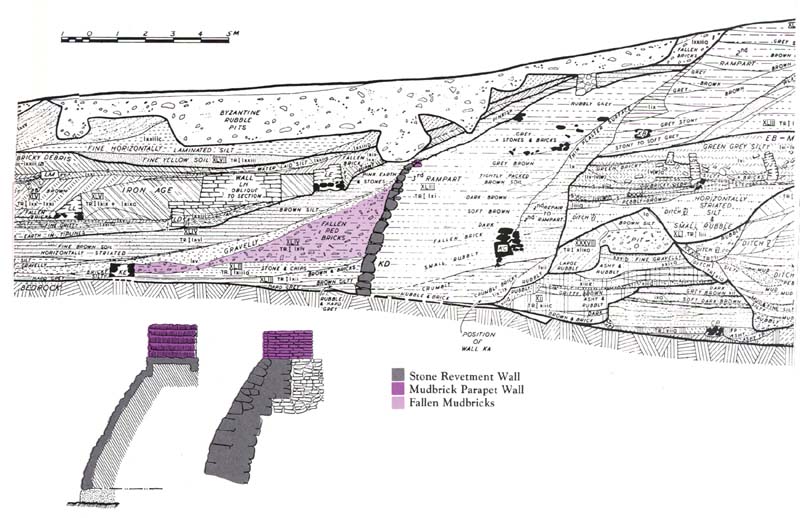Image Details

Top: after Kenyon, Jericho 3, Plate 236/Lower left: Sellin & Watzinger, Jericho/Lower right: Garstang, PEFQS (1931)
All three excavations at Jericho found evidence—at different points around the tell—of a mudbrick parapet wall atop the stone revetment wall. In Kenyon’s drawing, as well as in the two sections below it, by Sellin and Watzinger (left) and Garstang (right), gray indicates the revetment wall and violet highlights the parapet wall on top of it.
In the Kenyon section, a plaster-covered earthen rampart sloped upwards (to the right in this view) to the top of the tell behind the revetment wall. The wall that surrounded the city once stood atop this earthen embankment off the right side of the drawing. Although Kenyon found the revetment wall and the earthen rampart, she did not find the city wall itself on top of the tell. But, astoundingly, a heap of fallen red bricks (colored pale violet) lay outside the revetment wall. These red bricks almost certainly came from the city wall on top of the tell or from a mudbrick parapet wall atop the revetment wall, or both, as Kenyon recognized. Author Wood speculates that an earthquake—a common occurrence in the Jordan Valley—could have caused Jericho’s city wall to tumble, not only leaving the city fatally exposed but providing the massed Israelites at the base of the tell with a convenient walkway over the revetment wall right into Jericho.
